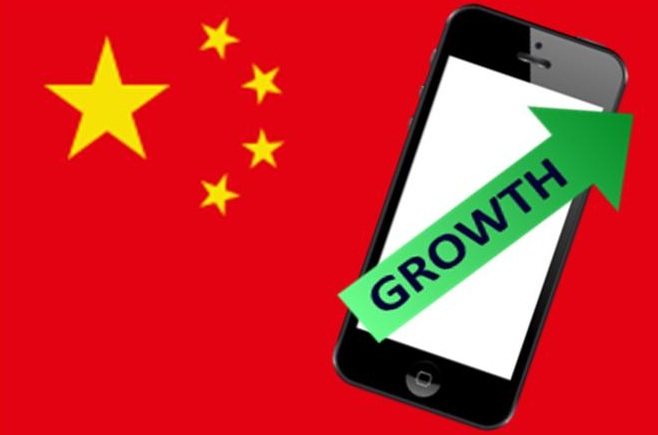New report highlights the growth of mobile transactions in CHina
A new report from the People’s Bank of China shows that mobile payments are growing at a rapid pace in China. Many people have become quite comfortable with the idea of purchasing products online using their mobile devices. A growing number of retailers are beginning to accept mobile payments in their physical stores as well, making it easier for mobile commerce to flourish. Mobile banking is becoming particularly popular among consumers who tend to manage much of their finances with the aid of a smartphone or tablet.
Some $500 million in mobile transactions occurred in 2013, up 255% over transactions recorded in 2012
According to the report from the People’s Bank of China, nearly $500 million has been sent through mobile devices throughout the country in 2013. This represents a 255% increase over the mobile transactions that were recorded by the bank in 2012. The report only takes into account transactions conducted through the country’s major banking entities, however, and the amount of mobile transactions that occurred last year may actually be higher.
Major planks play a dominant role in mobile commerce throughout China
 Major banks have established a very powerful position in China’s mobile commerce sector. These organizations currently provide the most popular mobile money services and have a massive consumer base to draw from. Smaller banking organizations have a limited presence in mobile commerce because of their fewer resources and their general inability to engage mobile consumers in an effective manner. Retailers tend to side with larger banks because they have a favorable track record and are more aggressive when it comes to matters concerning security.
Major banks have established a very powerful position in China’s mobile commerce sector. These organizations currently provide the most popular mobile money services and have a massive consumer base to draw from. Smaller banking organizations have a limited presence in mobile commerce because of their fewer resources and their general inability to engage mobile consumers in an effective manner. Retailers tend to side with larger banks because they have a favorable track record and are more aggressive when it comes to matters concerning security.
Large e-commerce organizations are powering the growth of mobile payments within the country
E-commerce throughout the Asian-Pacific region is growing quite quickly, with China leading the way. The country is home to some of the largest companies in the global e-commerce scene, and these companies are becomming increasingly interested in mobile commerce. As these large companies begin to engage mobile consumers, China is expected to continue seeing a dramatic increase in mobile payments activity.
Retailers are flocking to mobile commerce more quickly than consumers are in Australia
Australian retailers are adopting mobile payments faster than consumers, according to Vend, a New Zealand vendor that develops point-of-sale tools for traditional retail stores. Consumers have been showing relatively strong interest in the concept of mobile commerce, but only a modest amount of these people have actually begun participating in mobile shopping. Retailers, however, have been aggressive in their adoption of mobile commerce, hoping to engage a consumer base that is becoming more mobile-centric.
Retail sector continues to aggressively adapt to changes in the business landscape
Australia’s retail sector has always been somewhat ahead when it comes to matters of commerce. Retailers in the country are often quick to adopt new technology that allows them to better engage consumers in a dynamic way. The problem, however, is that consumers are not as enthusiastic when it comes to some of the moves that retailers are making. Mobile commerce is still relatively new and while retailers have high hopes for the mobile space, many consumers are wary of the threats that exist therein.
Consumers are still wary of mobile commerce and its security issues
 Many people have cited security issues as their reason for not participating in mobile commerce. Because mobile commerce involves the trafficking of financial information over mobile platforms, this sector has become particularly attractive to malicious groups that would be interested in exploiting this financial information. In Australia, consumers are more apt to favor traditional forms of payment rather than mobile forms. Part of this mentality may be due to poor experiences that consumers may have had with mobile commerce platforms in the past.
Many people have cited security issues as their reason for not participating in mobile commerce. Because mobile commerce involves the trafficking of financial information over mobile platforms, this sector has become particularly attractive to malicious groups that would be interested in exploiting this financial information. In Australia, consumers are more apt to favor traditional forms of payment rather than mobile forms. Part of this mentality may be due to poor experiences that consumers may have had with mobile commerce platforms in the past.
Many consumers are comfortable with traditional payment methods and have had bad experiences with mobile commerce platforms
Changing consumer behavior is not likely to be an easy feat. Retailers have been promoting mobile payments for some time but have found relatively little traction. Consumers have become quite comfortable with the way they shop and pay for products. New forms of payments can make some people uncomfortable and unwilling to use mobile platforms while shopping. Poorly designed mobile commerce platforms can also have an adverse effect on people’s opinions concerning mobile commerce.
 Major banks have established a very powerful position in China’s mobile commerce sector. These organizations currently provide the most popular mobile money services and have a massive consumer base to draw from. Smaller banking organizations have a limited presence in mobile commerce because of their fewer resources and their general inability to engage mobile consumers in an effective manner. Retailers tend to side with larger banks because they have a favorable track record and are more aggressive when it comes to matters concerning security.
Major banks have established a very powerful position in China’s mobile commerce sector. These organizations currently provide the most popular mobile money services and have a massive consumer base to draw from. Smaller banking organizations have a limited presence in mobile commerce because of their fewer resources and their general inability to engage mobile consumers in an effective manner. Retailers tend to side with larger banks because they have a favorable track record and are more aggressive when it comes to matters concerning security.
 Many people have cited security issues as their reason for not participating in
Many people have cited security issues as their reason for not participating in 